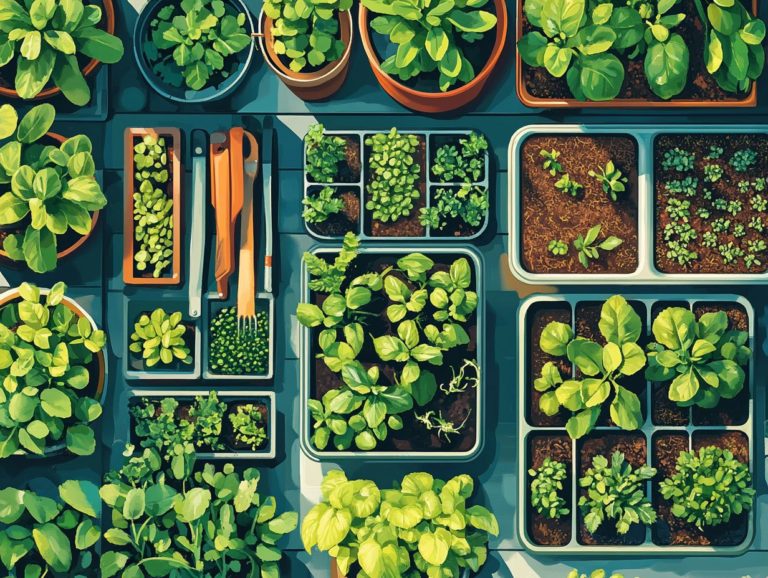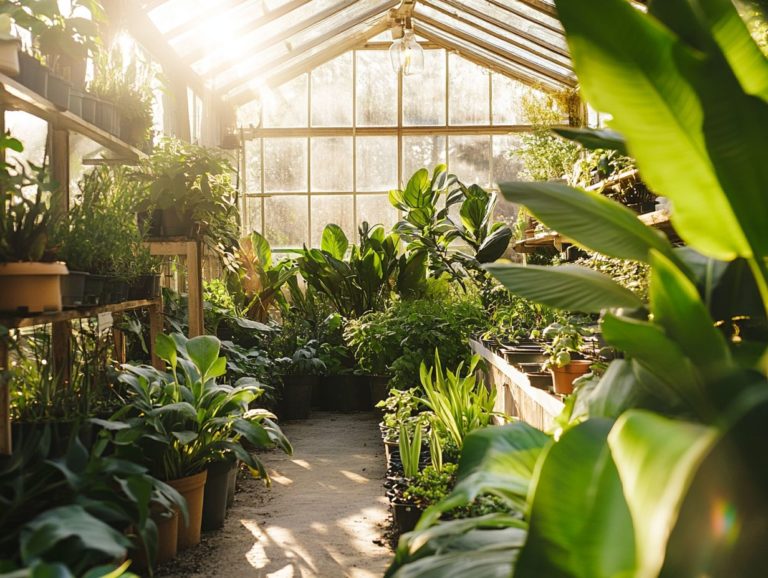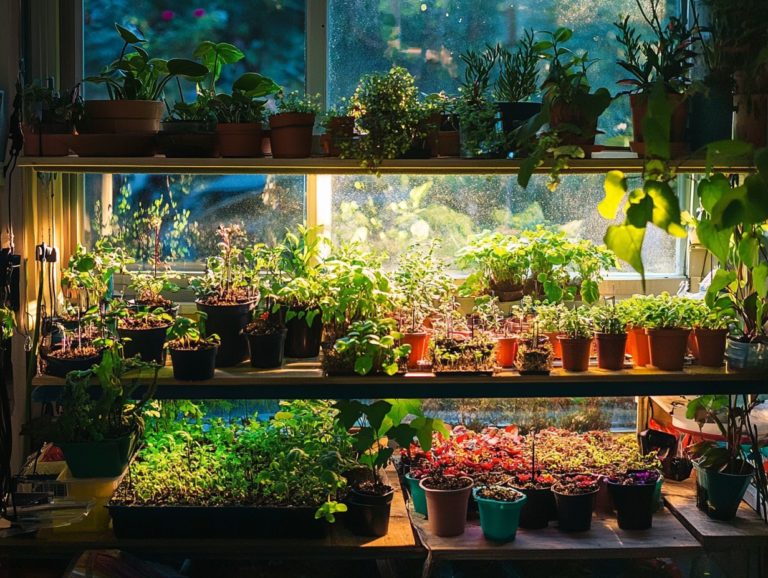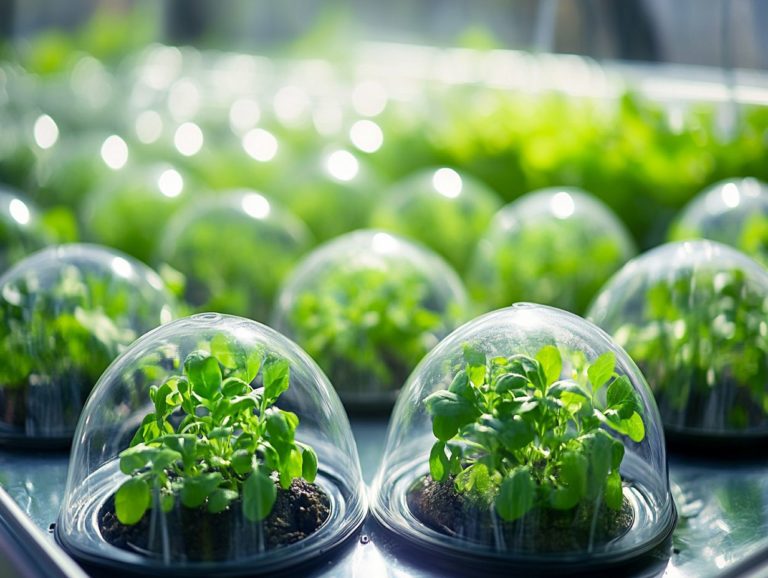Common Issues in Plant Propagation and Solutions
Plant propagation is an exciting adventure you won’t want to miss! While it comes with challenges, the rewards are well worth it.
From pinpointing common issues to employing the right techniques for different plant types, successful propagation requires a mix of knowledge and skill. This article explores the typical hurdles in plant propagation and offers practical solutions to overcome them.
You ll discover effective methods, best practices, and proactive measures to ensure your plants not only survive but truly thrive. Whether you re just starting or have years of experience, these insights will empower you to cultivate a flourishing garden.
Contents
Key Takeaways:
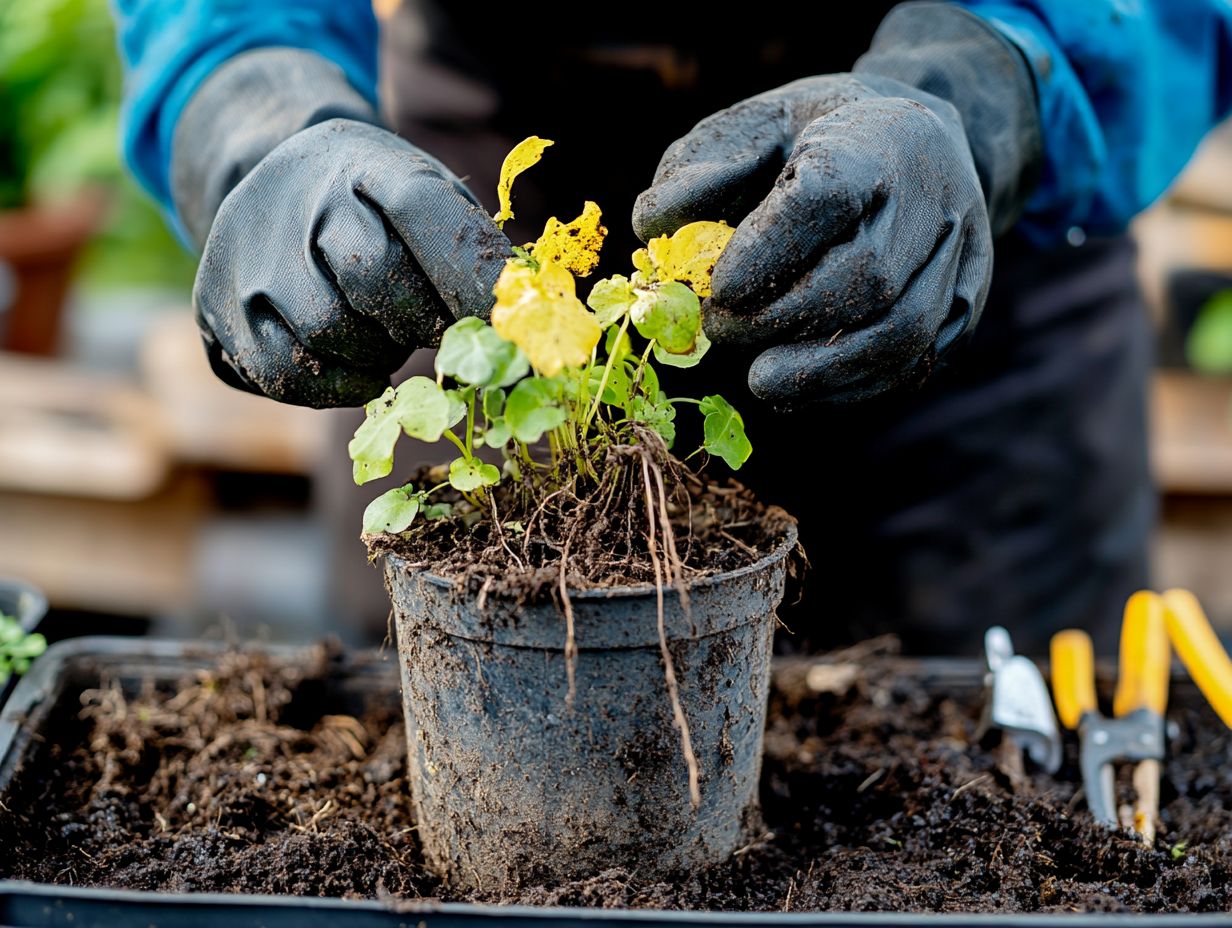
- Identify and address common problems to ensure successful propagation.
- Implement best practices to increase success rates.
- Utilize tips and tricks for troubleshooting common issues.
What is Plant Propagation?
Plant propagation is the art of producing new plants from those already thriving in your garden. It employs various techniques like cuttings, seeds, and root systems the underground parts of plants that absorb water and nutrients. This important gardening task allows you to cultivate robust plants and expand your green oasis.
To master propagation, it s crucial to understand the methods and conditions that foster successful growth. This includes investigating seed germination, selecting the right cuttings, and identifying suitable plants for propagation.
Moreover, being aware of the environmental conditions that impact plant health will greatly improve your success in propagating plants.
Common Issues in Plant Propagation
While plant propagation can be rewarding, typical pitfalls can hinder the growth of your healthy cuttings. Recognizing these common missteps is key to enhancing your gardening skills and achieving successful propagation.
Common errors, such as insufficient watering frequency or choosing the wrong type of compost, can weaken plants or thwart your efforts to produce new growth. To tackle these challenges effectively, refer to our quick guide to common indoor plant issues and prioritize disease prevention while maintaining a sterile environment.
Identifying and Addressing Common Problems
Identifying and addressing issues in plant propagation is essential for your success and the health of your young plants. Maintaining optimal humidity and light levels is particularly important.
Finding the right balance can make the difference between cuttings that flourish and those that struggle to take root. For instance, some plants thrive in humid environments, aiding their rooting process, while others may suffer in overly damp conditions, leading to rot or fungal issues.
Light levels are equally critical; cuttings that don t receive enough light may become leggy or fail to develop robust foliage. Mastering these details will set you up for success in creating an environment that promotes healthy growth, significantly reducing the chances of setbacks.
Propagation Techniques for Different Plant Types
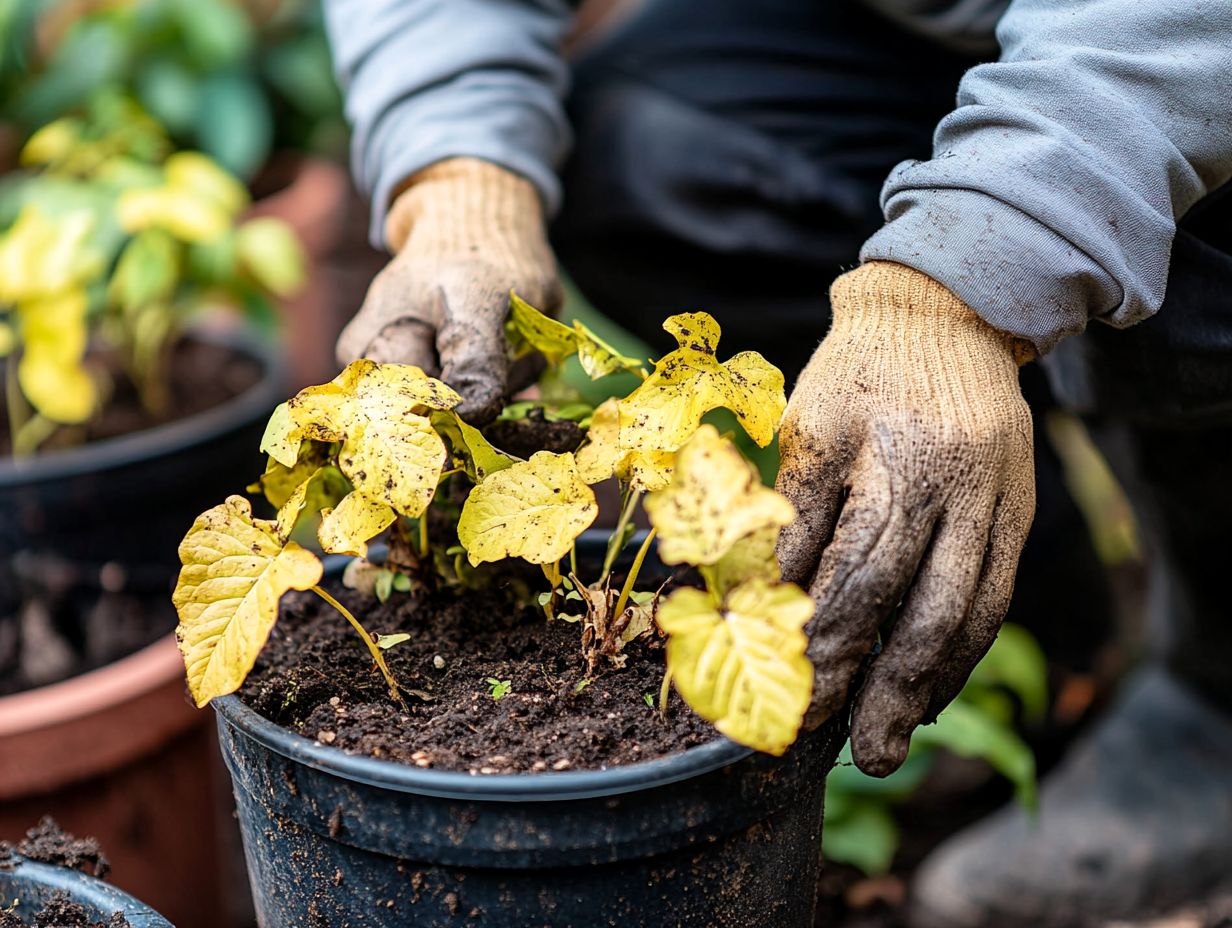
The diverse propagation techniques you choose for various plant types are crucial for achieving successful gardening results. Selecting the most suitable methods will help nurture your young plants.
From mastering cutting techniques to choosing the ideal potting mix or perlite blend (a lightweight material that helps improve soil drainage), understanding these techniques can greatly elevate your propagation success.
Tailoring your approaches based on plant types whether through root cuttings or seed germination highlights the significance of composting tips to create the optimal environment for new growth.
Best Practices for Successful Propagation
Employing best practices for successful plant propagation is essential for anyone looking to elevate their gardening skills and ensure their plants flourish. Key strategies include establishing effective watering guidelines to maintain optimal moisture levels and implementing airflow management techniques that prevent disease and promote robust root systems.
A humidity dome helps keep moisture around young plants, making it easier for them to grow. Understanding the nuances of timing and methods for fertilization can significantly enhance your propagation success.
Creating a well-balanced ecosystem for seedlings requires careful monitoring of environmental conditions, as young plants are particularly sensitive. Maintaining consistent moisture without the risk of overwatering is crucial; too much water can lead to root rot.
Ensuring adequate airflow dramatically reduces the chances of fungal infections, allowing the roots to thrive. The protective layer of a humidity dome not only retains moisture but also fosters a stable temperature, which is vital for germination.
Timing is just as important when it comes to fertilization. Knowing the right moment to introduce nutrients lays the groundwork for robust, healthy growth, ultimately cultivating thriving plants in your garden.
Solutions for Common Issues
Finding effective solutions to common challenges in plant propagation is crucial for you as a gardener. This enables you to troubleshoot issues and foster healthy plant growth.
Take charge of your gardening! Tackle problems with smart practices to ensure that your cuttings receive the ideal amount of water without risking over-saturation.
Pay attention to proper cutting care and select the most suitable propagation methods. This can significantly help you navigate the typical obstacles encountered throughout the propagation journey.
Tips and Tricks for Troubleshooting
Employing effective tips and tricks for troubleshooting propagation problems can significantly enhance your success as a gardener. Managing key factors like air circulation and compost type is essential.
By understanding how various environmental conditions impact the growth of healthy plants, you can make informed adjustments to your propagation techniques. For instance, avoiding the top 7 mistakes in indoor plant propagation can help you fine-tune these critical elements and mitigate common challenges.
Prioritizing good air circulation around your seedlings reduces the risk of mold and mildew, fostering a healthier growing environment. Selecting the right type of compost tailored to your specific plants ensures they receive adequate nutrients without overwhelming them.
Adjusting lighting conditions and humidity levels according to your plants’ needs can further enhance their resilience. These small yet impactful changes improve overall plant vitality and lead to quicker rooting and stronger growth.
Ultimately, this approach helps you achieve your propagation goals with greater ease and confidence.
Preventing Issues in Plant Propagation
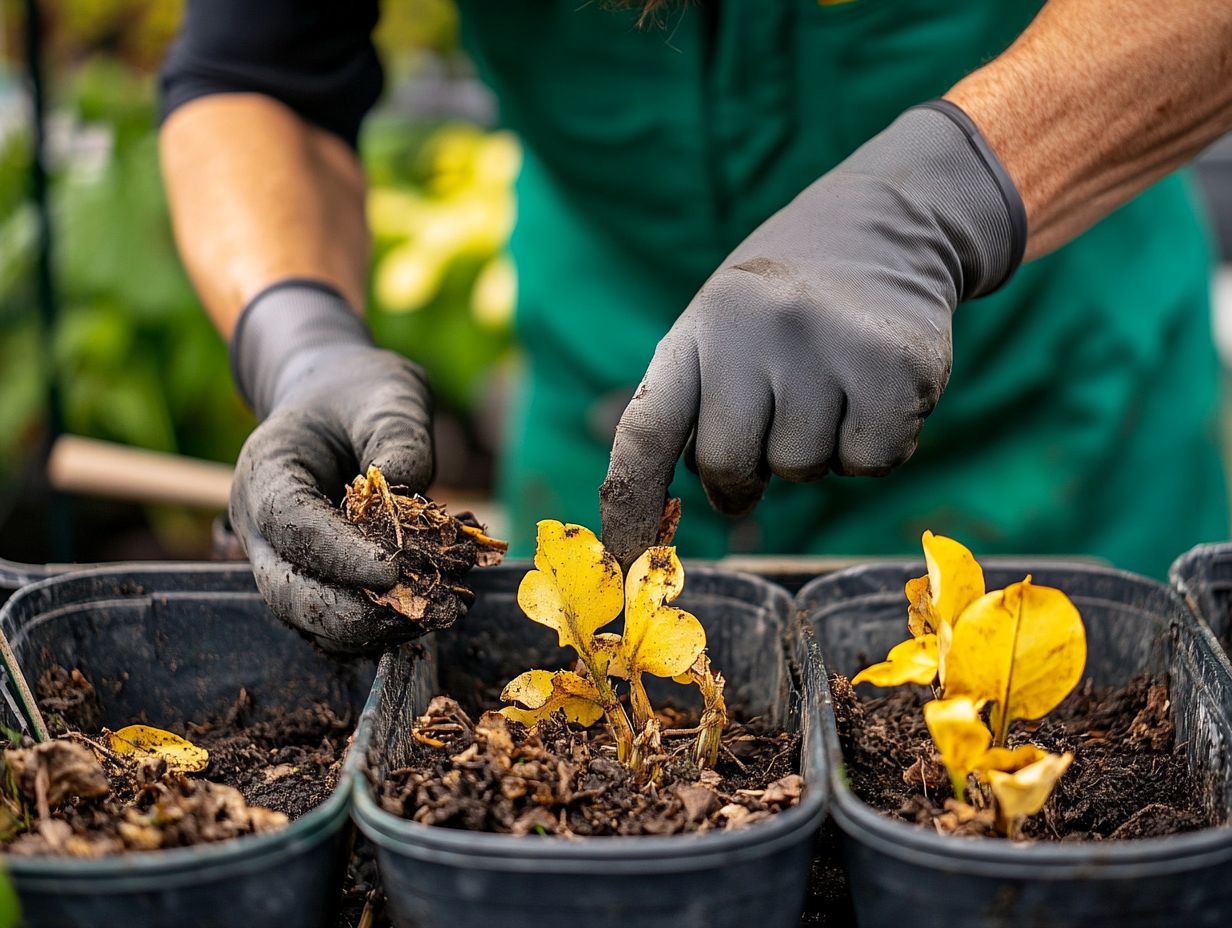
Preventing issues in plant propagation is essential for any gardener who wants to cultivate healthy plants and achieve consistent growth. It s vital to adopt proactive measures.
Strategies like ensuring adequate air circulation and practicing careful cutting care can significantly minimize the chances of encountering common propagation problems. By establishing and maintaining an optimal environment for your young plants, you can effectively ward off issues that may emerge during the propagation process.
This ultimately leads to a higher success rate.
Start your propagation journey today and watch your garden thrive!
Proactive Measures for Healthy Propagation
Implementing proactive measures for healthy propagation is essential for you as a gardener seeking to optimize your planting processes and grow healthy plants. Key strategies include diligently monitoring humidity levels and selecting the right composting techniques to create a nurturing environment for your cuttings.
By paying close attention to the specific environmental conditions required for different plant types, you can effectively support root growth and overall health throughout the growing process.
Recognizing that various species have unique humidity needs allows you to tailor your care, significantly enhancing the survival rates of your cuttings. Using homemade compost not only enriches your soil but also provides essential nutrients that foster vigorous root system development.
Tracking changes in light exposure and temperature can further refine your growing conditions, leading to healthier plants. As you consistently implement these practices, they will boost your plant vitality!
Frequently Asked Questions
Common Issues During Plant Propagation
Some common issues that arise during plant propagation include:
- Root rot
- Wilting
- Insect infestations
Preventing Root Rot
To prevent root rot, make sure to use well-draining soil and avoid overwatering. Regularly check for and remove any dead or diseased roots.
Why Are My Propagated Plants Wilting?
Wilting can be caused by underwatering, overwatering, or improper light or temperature levels. Check the soil moisture and adjust watering accordingly, and provide the appropriate light and temperature conditions for the specific plant species.
Protecting Against Insect Infestations
To protect against insect infestations, regularly inspect your plants and remove any affected areas immediately. You can also introduce natural predators, such as ladybugs, to control pest populations.
Why Are My Propagated Plants Not Developing Roots?
If your propagated plants are not developing roots, it could be due to poor soil quality, lack of nutrients, or environmental factors such as incorrect temperature or humidity levels. Consider repotting in a nutrient-rich soil mix and adjusting your growing conditions.
Ensuring Successful Propagation
To ensure successful propagation, it is important to use healthy, disease-free plant material and provide proper care, including adequate light, water, and nutrients. Regularly monitoring for and addressing any issues that arise can greatly improve success rates.
Start implementing these tips today for a thriving garden!


